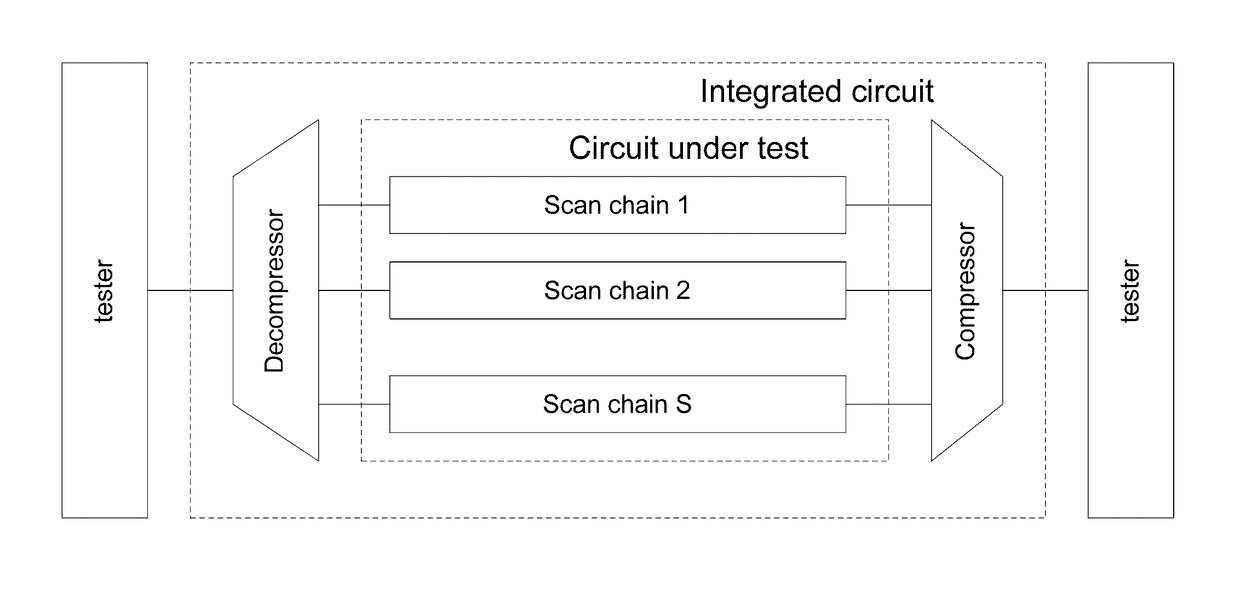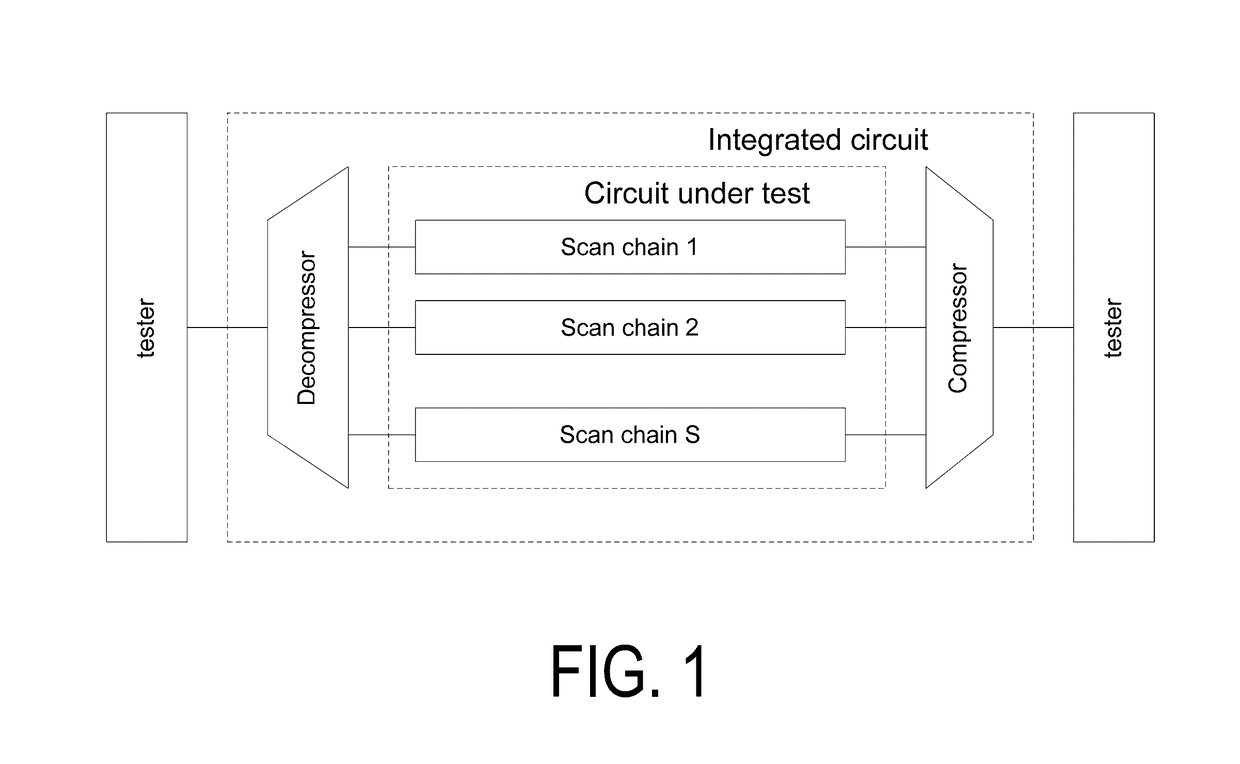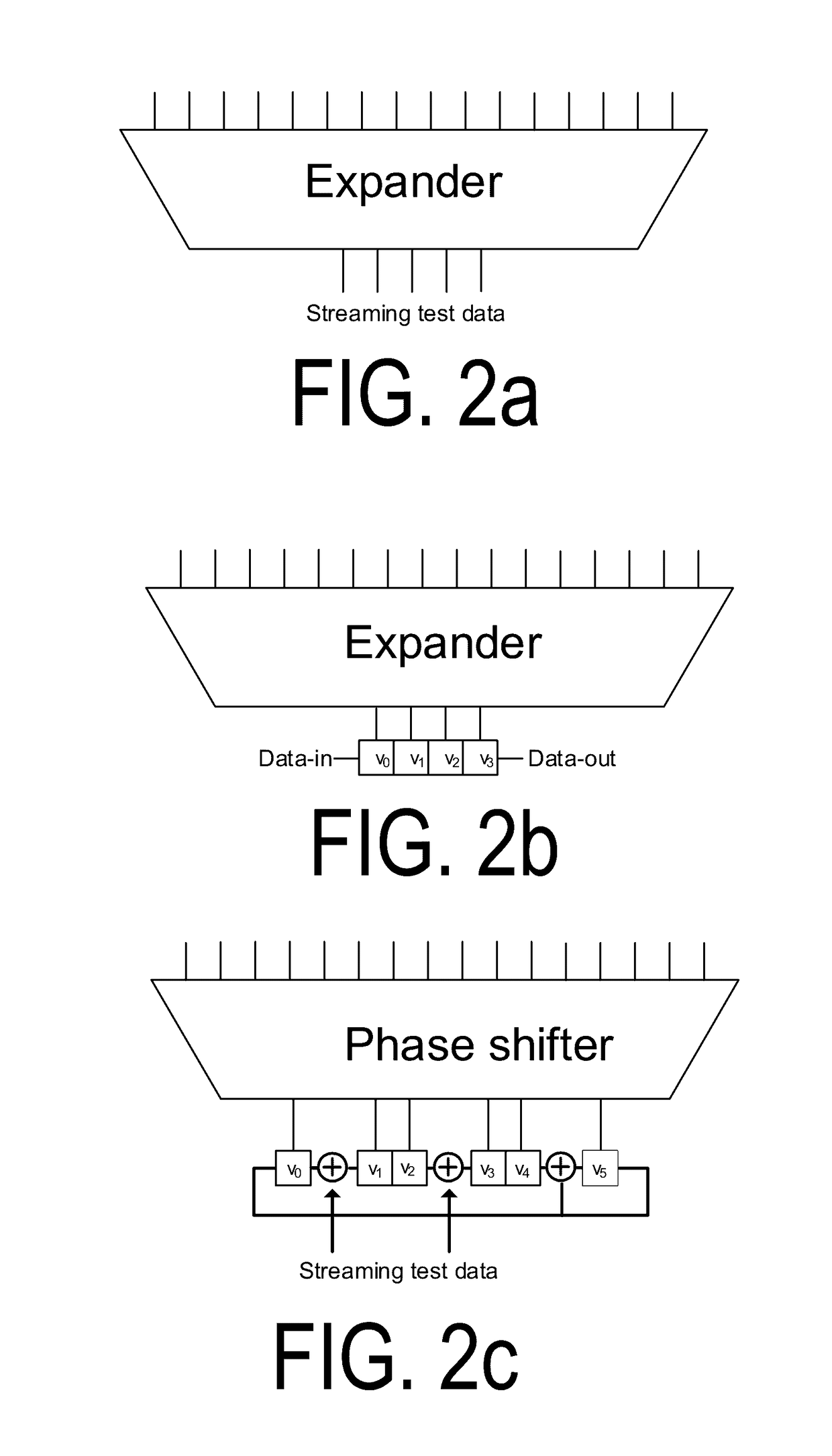Power-aware dynamic encoding
a dynamic encoding and dynamic encoding technology, applied in the direction of individual semiconductor device testing, cad circuit design, instruments, etc., can solve the problems of limiting the level of test data compression, unencodable test cubes, negligible probability of not finding a solution (or having an encoding conflict), and efficient pruning of branch-and-bound search space, less decompressor-imposed constraints
- Summary
- Abstract
- Description
- Claims
- Application Information
AI Technical Summary
Benefits of technology
Problems solved by technology
Method used
Image
Examples
example 1
[0077]FIG. 9 shows an example wherein the scan cells depend on one static variable and one dynamic variable. The conventional linear encoding generates SLEs having 12 variables. The resultant SLEs is 1-partite because each characteristic equation includes one dynamic variable. As a result, each dynamic variable can be uniquely associated with a group of scan cells. Also, all groups of scan cells are linear independent because they are uniquely associated with dynamic variable. Let c0, c1 and c2 be an ordered set of care bits which are generated during the branch-and-bound search. Care bits c0 and c1 are dynamic because they are the first care bit in group v4 and group v5, respectively. Next, c2 is the second care bit of group v4 therefore the SLEs must include an augmented equation for this care bit. In the particular case, a set of relevant dynamic care bits includes c0, i.e., the first care bit of the corresponding group v4. The characteristic equations of c0 and c2 are v0⊕v4=c0 a...
example 2
[0078]FIG. 10 shows an example for an identification of encoding conflicts for 2-partite LSEs. Let c0, c1, . . . , c5 be an ordered set of care bits during ATPG. All encoding conflicts in the resultant SLEs based on the dynamic variables can be identified using a graph such that i) each node is associated with a variable and ii) each vertex is associated with an equation and is labeled with the value of this linear equation. A linear dependency exists if the corresponding graph has a loop. An encoding conflict exists if the loop has an odd number of 1's. Let the SLEs based on the dynamic variables include the following dynamic equations: v0Γv1=c0, v1Γv2=c1, v2Γv3=c2, v3Γv4=c3, v4Γv5=c4 and v0Γv5=c5. FIG. 10 shows the SLEs and the corresponding graph. The presented graph has one loop and an encoding conflict exists if c0Γc1Γc2Γc3Γc4Γc5=1. Therefore, care bit c5 is a static because it belongs to a dependent group and c0, c1, c2, c3 and c4 are relevant dynamic care bits of static care ...
example 3
[0079]FIG. 11 shows an example for a prevention of encoding conflicts for 2-partite LSEs. All dependencies in the SLEs based on the dynamic variable are derived based on a matrix which includes a row for each dynamic variable of the first disjoint set, a column for each dynamic variable of the second disjoint set and elements of the matrix contain the value of the corresponding linear equation. Four elements at the intersection of a pair of rows and a pair of columns form a quadruplet. An encoding conflict exists if any quadruplet includes an odd number of 1's. Let us reuse the equations which are defined by Example 2 wherein {v1, v3, v5} is the first set of dynamic variables and {v0, v2, v4} is the second set of dynamic variables. The resultant matrix has three rows and three columns such that each row and column is uniquely associated with one variable of each disjoint set, respectively. All encoding conflicts can be prevented if the last (fourth) element of each quadruplet is set...
PUM
 Login to View More
Login to View More Abstract
Description
Claims
Application Information
 Login to View More
Login to View More - R&D
- Intellectual Property
- Life Sciences
- Materials
- Tech Scout
- Unparalleled Data Quality
- Higher Quality Content
- 60% Fewer Hallucinations
Browse by: Latest US Patents, China's latest patents, Technical Efficacy Thesaurus, Application Domain, Technology Topic, Popular Technical Reports.
© 2025 PatSnap. All rights reserved.Legal|Privacy policy|Modern Slavery Act Transparency Statement|Sitemap|About US| Contact US: help@patsnap.com



